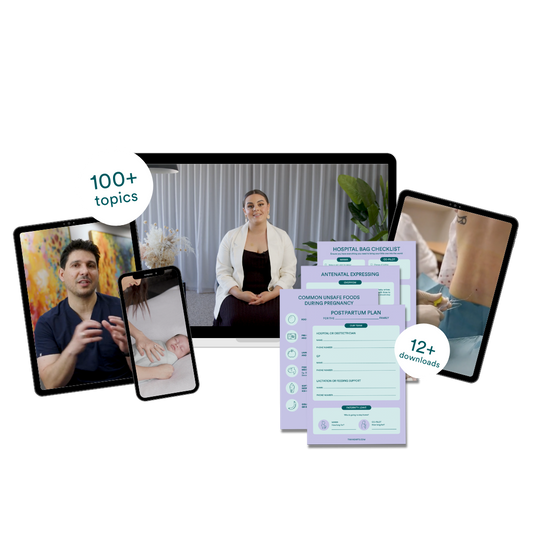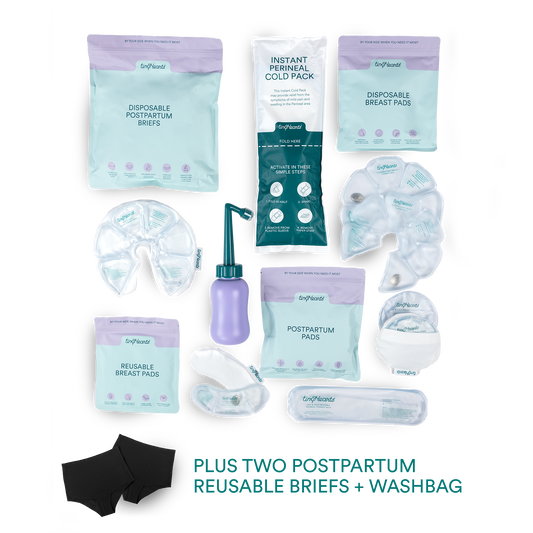Sensory beads; Jelly Beads; Orbeez; Dragon Eggs; Fairy Eggs.
All names for Water Beads.
You might've seen the TikTok that's currently going viral about a 9mo little girl named Kennedy who ingested ONE single water bead that became stuck in her small intestine. Her little body became septic, went into shock, her organs were failing + she started leaking fluid into surrounding tissues. She needed multiple surgeries, spent a length of time in PICU [Peadiatric Intensive Care Unit], on machines helping her breathe along with tubes and cannulas. Miraculously, her mama has posted recently that she is finally beginning to recover. What a devastating turn of events from a single water bead. With lots of parents asking questions about water beads, we thought we'd write a blog to help you understand more about them.
WHAT ARE WATER BEADS?
Water beads are tiny, brightly coloured polymer crystals [a class of plastic] that begin about the same size as a pin head. Once placed in water, these highly absorbent beans grow to be the size of a marble. If you take them out of the water and let them dry out, they will shrink back down to their prior small size. Water beads are usually marketed as 'non-toxic', but this can be misleading as some of the beads may contain chemicals, such as acrylamide [more info on this below].

WHERE DID THEY COME FROM?
Water beads have been around for years. Before being marketed as a sensory tool or a fun item for kiddos, water beads were used to keep moisture in soil in the agriculture and floristry industry. They're also used in nappies and sanitary products to absorb moisture.
WHY ARE THEY DANGEROUS?
For years, the Australian Competition and Consumer Commission [ACCC] has repeatedly raised safety issues with water beads. Despite this, the dangers of water beads still aren't common knowledge.
Once ingested, water beads can expand up to between 100-400 times their original size, making them dangerous regardless of if they are swollen or have already been soaked in water. They may also continue to expand once swallowed due to the fluid within the body, and unfortunately, they look like little lollies or sprinkles.
You can buy different sizes of water beads, with some of the bigger water beads can expand to up to between 6cm and the size of a cricket ball. Water beads can cause vomiting, skin irritation, severe dehydration, pain, an obstruction in the intestines or bowel, pose a choking risk and may be aspirated into the airways [breathed in]. There are also the risks of little ones putting them in their ears and up their nose too.
Water beads may not always show up on an x-ray or CT scan, making it tricky to identify where in the digestive system they are at. However, they may be spotted using ultrasound, but as with any ultrasound, some of the beads may be missed.
WHY ARE THESE STILL BEING SOLD IF THEY'RE UNSAFE?
Over the years, there have been multiple recalls for water beads, plus numerous warnings released about this product. In 2018 and 2019, the ACCC released two voluntary recalls for two specific water bead products. Despite this, these products remain on shelves as some big retailers report that water beads have been rigorously tested and meet the Australian standards for toys, including expandable toys, and shouldn't be given to kiddos under 5.

SERIOUS CASES CAUSED BY WATER BEADS
In 2016, The New South Wales Poisons Centre released a report that outlined 129 kiddos swallowing water beads over the prior 12 years. More recently, since 2018, The Queensland Poisons Information Centre has also received 71 calls about little ones ingesting the water beads. In addition to Kennedy's story that her mama shared on TikTok, there have been other stories of little ones experiencing death or serious injury from water beads.
ABC News reports that in Pakistan in 2012, a 6mo baby boy ingested a water bead that caused a bowel obstruction. The bead was surgically removed, but devastatingly, his abdomen burst, and he developed a life-threatening infection, which caused him to pass away two days after a second surgery. 💔
In 2017, a 10mo baby girl named Kipley ingested her sister's water beads. Kipley was taken to the hospital, with her loved ones thinking she had gastro, having not realized she had swallowed a water bead. Kipley was unable to keep anything down, but despite various tests and medications, little Kipley continued to vomit.
Kipley went into emergency surgery, where water beads had formed a mass in her small intestine. Her parents noticed a decline in her speech + motor skills, causing them to investigate further what the beads were made of, which led to Polyacrylamide, which is supposed to be non-toxic. Her parents continued investigating and found that the polymerization process can lead to residual acrylamide monomer exposure.
Due to Kipley's exposure to acrylamide from the water beads, she suffered a brain injury, Toxic Brain Encephalopathy. More about this surgery is shared on https://thatwaterbeadlady.org 💔
In the US in 2016, a 5yo and 7yo had placed water beads in their ears. Doctors looked in their ears but couldn't see the beads, so it was assumed they had an ear infection. They were given antibiotics + ear drops. However, once the true problem was discovered after the beads had expanded, the water beads had to be surgically removed, leaving both kiddos with damage to their eardrum and one having permanent hearing loss. 💔
SYMPTOMS OF INGESTION
One of the worst things is that the symptoms associated with swallowing a water bead may be caused by a single water bead alone and may not always be present straight away. It could be a matter of hours or days for symptoms to present, meaning the connection between the symptoms and the cause may not be immediately apparent.
Symptoms your little one has swallowed a water bead:
- Drooling
- Coughing
- Sore throat or complaining something is 'stuck in their throat'
- Difficulty swallowing
- Difficulty or unusual breathing
- Vomiting or gagging
- Refusing to eat
- Constipation
- Irritability
- Bloated + swollen belly
- Abdo pain
- General pain + discomfort
PREVENTION
Obviously, the best prevention is to not have water beads in the house. However, if you decide to use water beads:
- Actively, 100% supervise your little ones + even older kiddos
- Wash hands well after use
- Dispose of water beads safely
- Check the area to ensure no water beads have been left behind or missed
- Educate your kiddos not to put them in their nose or mouth
- Only let your kiddos use these once they have already been soaked in water
- Avoid giving to little ones under 5
- Educate loved ones on the dangers
- Monitor closely for symptoms of ingestion in the days after playing with them
- Escalate to medical attention if concerned
WHAT TO DO IF YOU THINK YOUR LITTLE ONE HAS INGESTED A WATER BEAD?
If you think your little one has ingested a water bead, remove any remaining water beads around them, don't induce vomiting and call Posion's Information Centre on 13 11 26, who are available 24 hours a day, 7 days a week, for further direction. If your little one is not responding normally, having difficulty or unusual breathing, or showing any other red flag symptoms, call 000 for an ambulance.
I hope this helps you understand the dangerous side of water beads a bit better. Remember, this is only a guide and general advice only. For specific, individualised advice, always have a chat with Bub's GP or Child Health Nurse and escalate as required.
Helping you feel prepared for parenthood is what Tiny Hearts is all about. Book into our baby + child first aid class, and let us empower you to face parenthood without fear. 💗








